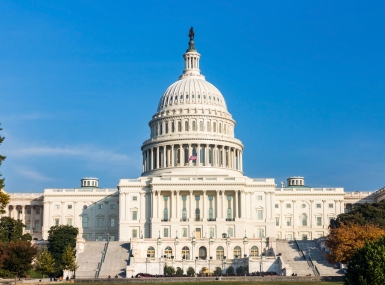White House announces new energy office to achieve the goal of net-zero emissions by 2050
Upcoming Events
Related News

Key Takeaways
On November 24, the White House launched a new Energy Division in the Office of Science and Technology Policy (OSTP). Led by two scientists, the OSTP Energy Division is tasked with developing national clean energy plans and achieving the administration’s goal of net-zero carbon emissions by 2050. The Energy Division will also help implement the $21.5 billion energy provisions in the recently passed Bipartisan Infrastructure, Investment and Jobs Act (P.L. 117-58). On December 8, President Biden signed an Executive Order requiring that the federal government achieve net-zero carbon emissions by 2050. Counties support federal funding, economic, fiscal and practical awards for counties and businesses to meet objectives that contribute to reducing atmospheric carbon emissions and adapt to reduce atmospheric carbon emissions and adapt climate change.
The administration laid out much of its plan to achieve environmental goals in Executive Order 14008, including reviewing federal regulations and establishing a White House Office of Domestic Climate Policy. Additionally, the administration aims to reduce U.S. greenhouse gas pollution by 50–52 percent from 2005 levels by 2030.
Local governments play a crucial role in responding to climate change and reducing national emissions levels. Many counties engage and partner with local utilities in energy planning, including utility-scale renewable energy projects, key regulatory issues, grid modernization and storage and energy assurance strategies. While counties support climate change initiatives, these programs and policies must not create unfunded mandates or preemptions on counties and their local economies. NACo urges our federal partners to work closely with counties on new initiatives, such as those developed by the OSTP Energy Division. We will continue to monitor developments as the new office's agenda is shaped.
Resource
Implementing Infrastructure Investments at the County Level: The Bipartisan Infrastructure Law (P.L. 117-58)

Related News

U.S. House of Representatives passes SPEED Act and other permitting reform bills
On December 18, the U.S. House of Representatives passed the SPEED Act (H.R. 4776). The SPEED Act would strengthen county involvement in decision-making and make needed commonsense reforms to the federal environmental review process.

House Natural Resources Committee advances the Endangered Species Act Amendments Act of 2025
On December 17, the House Natural Resources Committee advanced the Endangered Species Act (ESA) Amendments Act of 2025 (H.R. 1897). The version passed by the committee adopted several changes from the initial bill and would address key county concerns by improving the implementation of the ESA. The legislation now awaits a floor vote before the whole U.S. House of Representatives.

Senators introduce bipartisan UPGRADE Act to support small and rural public water systems
On December 15, Sens. Lisa Blunt Rochester (D-Del.) and Roger Wicker (R-Miss.) introduced the Unincorporated Partnerships for Grant Resources, Assistance, and Drinking Water Enhancements (UPGRADE) Act (S. 3465), a bipartisan bill that would strengthen federal support for small public water systems and helps unincorporated communities access clean and affordable water.